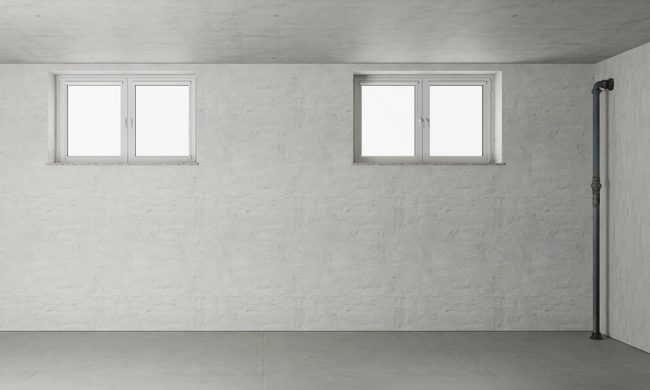Your yard is a space used for entertaining, playing, and relaxing. You care for your lawn not only for your enjoyment, but also for aesthetic purposes and to boost the curb appeal of your home.
Even if you're diligent about lawn care practices, there always seems to be an odd issue that comes up in the yard that stops you in your tracks. Unwanted mushroom growth is one of those lawn issues that often has homeowners scratching their heads. We’re going to teach you all you need to know about why these little guys grow how to get rid of mushrooms in the yard.

Are mushrooms in the yard a bad thing?
Mushrooms in your yard are not inherently bad. They play a crucial role in breaking down organic matter and enriching the soil. While mushrooms aren’t usually harmful to your lawn or garden, some varieties may be toxic for humans and animals. If you have curious children or pets, it’s a good idea to rid your yard of those pesky mushrooms.

Why do I have mushrooms growing in my yard?
The first step in getting rid of mushrooms is understanding why they’re there in the first place. Mushrooms are the result of a fungus that exists in your lawn’s soil. The fungus thrives in moist, low-light conditions where there are plenty of decaying organic materials. For this reason, the presence of mushrooms in your yard could be a result of:
- Excessive rain or overwatering
- Unaddressed dead plants, grass clippings, or thatch buildup
- An overly shaded yard
- Abandoned tree stumps or woodpiles

How to get rid of mushrooms in yards
Mushrooms are invasive because they release spores that act as seeds. If these spores remain in any area of your lawn, more mushrooms will eventually pop up. To get rid of mushrooms, there are a few phases of the process you’ll have to carefully move through.
Handpick any visible mushrooms
Step 1: First, you’ll need to manually remove all of the mushrooms in your yard. This should be done by hand and not with the use of a lawn mower or rake. Handpicking the mushrooms will ensure the spores released during removal are kept to a minimum.
Step 2: Be sure to have a plastic bag with you as you move around your yard picking mushrooms. Don’t simply throw them into a pile, as this will encourage the release of spores.
Step 3: Once you’ve picked all the mushrooms, tightly close the bag and either burn it or throw it in the trash.
Step 4: Don’t use mushrooms in your composting routine — this is a sure way to spread spores and encourage mushroom growth.

Treat your lawn with fertilizer
One surefire way of killing mushrooms is to cut off their food source. A nitrogen-rich fertilizer will go a long way in eradicating a mushroom problem once and for all. This is because nitrogen speeds up the decaying process of the organic matter in your soil, which is what mushrooms feed on, and gets rid of it. This is a particularly useful method if you’ve got a significant mushroom invasion on your hands.

How do I get rid of mushrooms in my yard naturally?
If you’re not comfortable using fertilizer on your lawn, some people have success using vinegar. It’s best to use a concentrated, industrial-strength vinegar that has a high pH level. Vinegar is highly acidic, so it has natural anti-fungal properties. To use vinegar instead of fertilizer for mushroom eradication, you’ll have to be a bit more diligent with the process.
Step 1: Dilute the vinegar and spray it directly onto the mushrooms. This will kill the active mushrooms and prevent them from releasing spores.
Step 2: Examine your lawn daily for any new mushroom growth and repeat the process.

How do I stop mushrooms growing on my lawn?
One important task in the mushroom-removal process is ensuring that they don’t continue to grow back. The best way to stop mushrooms from growing in your grass is to make your lawn as undesirable as possible for fungal growth. We talked about how mushrooms thrive in environments that are moist, have limited light, and contain a lot of decaying organic matter. It makes sense, then, to ensure your lawn doesn’t have these qualities.

Trim trees and bushes
You probably notice those pesky mushroom caps in areas that are shaded. To let more light onto the soil in those spots and discourage mushroom growth, trim back tree branches, bushes, and large plants to create less shade.

Remove organic material that will decay
You’ll have to be diligent about cleaning up your yard for a while after killing mushrooms. In order to cut off their food supply and discourage growth, make sure to quickly remove:
- Grass clippings
- Fallen branches
- Pulled weeds
- Thatch
- Dog poop
- Leaves
- Pine needles and pine cones
- Dead pieces of wood

Adjust your watering schedule
Since mushrooms love moist soil, it’s possible that you’re watering too often.
Step 1: If you’re watering your grass with a garden hose or sprinklers, reduce your watering sessions for a while and only water when the soil gets dry.
Step 2: If it’s simply a heavy rain season, there’s not much you’ll be able to do to limit watering. However, trimming branches to let more light in will help dry out the soil faster.
Mushrooms aren’t always harmful, but they are invasive and can make your lawn look less aesthetically pleasing. If you’re tired of seeing those pesky little caps in your grass, there’s plenty you can do to eradicate mushrooms for good. Treating your lawn, whether with fertilizer or a natural solution, and creating an environment where mushrooms won’t thrive will go a long way in keeping your lawn pristine, green, and mushroom-free.




